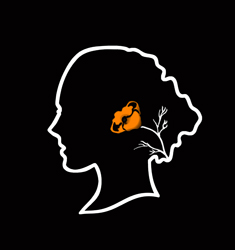Ernestine's portrait was purposefully painted in egg tempera. This is a medium that I thoroughly enjoy. It is a meditative experience from beginning to end. It requires mixing the dry ground paint pigment ( which is usually color from the earth or rock) mixed with egg yolk, distilled water and a dash of vodka (the technique I learned was from the Russian icon artists). This medium is very archival considering it's humble ingredients and is found on the Egyptian sarcophagi. It was the primary method of painting until 1500 when oil painting was invented.
It seemed fitting to use this medium because it existed when our European World met our Native American world on this continent. Most art at that period also was commissioned by the Catholic Church. The Catholic Church dominates our early California history and also plays a major role in Ernestine's personal life and beliefs and in her Chumash Heritage. The landscape in Bellini's Madonna Del Prato was referenced in Ernestine's portrait because it reminded me of our Santa Barbara Mission and the Jesuit priests who forever changed the Chumash way of life.
Ernestine dominates my landscape as the iconic Madonna and the Tule reed ( which was used in Chumash basketry) becomes her royal scepter pointing to the heavens where Ursa Major and Minor eternally reside. These constellations further illustrate Ernestine's memories of the Chumash story of the Sugar Bear and her profound relationship with her own mother.



